Kia Beat the Beat
Interactive dance floor brings the spirit of Kia to the Australian Open.
- 122hr live at the AO
- 5min average dwell time
- 9kplayers
Kia Beat the Beat was an experiential marketing installation designed to bring the bold, adventurous spirit of the Kia Seltos to life at the Australian Open. Inviting audiences to move through an immersive world of rhythm and sound on an interactive LED floor, the creative technology experience provided the perfect embodiment of Kia’s brand proposition – It’ll move you. Featuring split screen displays, immersive lighting and dynamic composition, Beat the Beat gave tennis fans a playful, memorable way to interact with Kia and their new Seltos.
Transforming the traditional test drive
The BriefThe Australian Open is an important marketing opportunity for Kia. As a major sponsor of the Open for the last 19 years, Kia often uses the tournament as the launch event for new vehicles. This presents an interesting proposition: how do you give crowds of audiences an experience of a car without the ability to actually drive it?
We’ve worked on this challenge with Kia before. But for the 2020 Australian Open, the brief came with a twist. We not only needed to develop a creative technology experience capable of giving audiences a different kind of test drive. We also needed to engage a younger, urban audience without alienating Kia’s existing, family-oriented consumers.
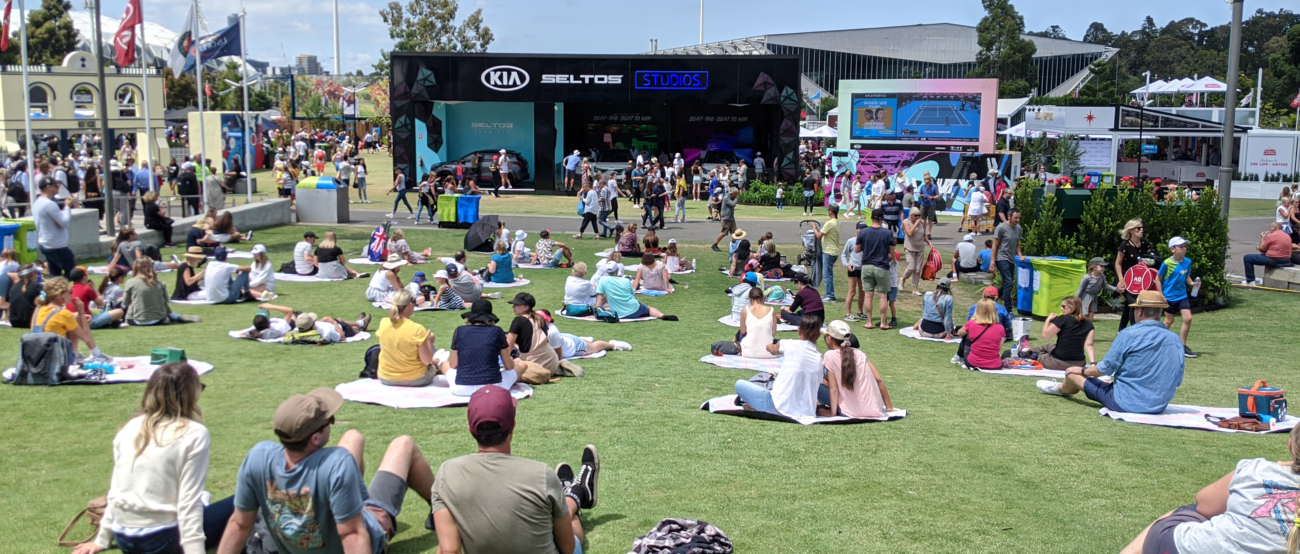

An unusual take on automotive marketing
The IdeaWhile there were a number of objectives we needed to hit with the experiential marketing activation, the brief itself was relatively unrestricted. Kia gave us a lot of creative space to play. They wanted audiences to have a fun, memorable experience, and they trusted us to get them there. So, moving away from more straightforward automotive marketing, our goal was to create a more abstract, emotional experience that would stimulate the senses, create memories, and ultimately turn the idea of the test drive on its head.
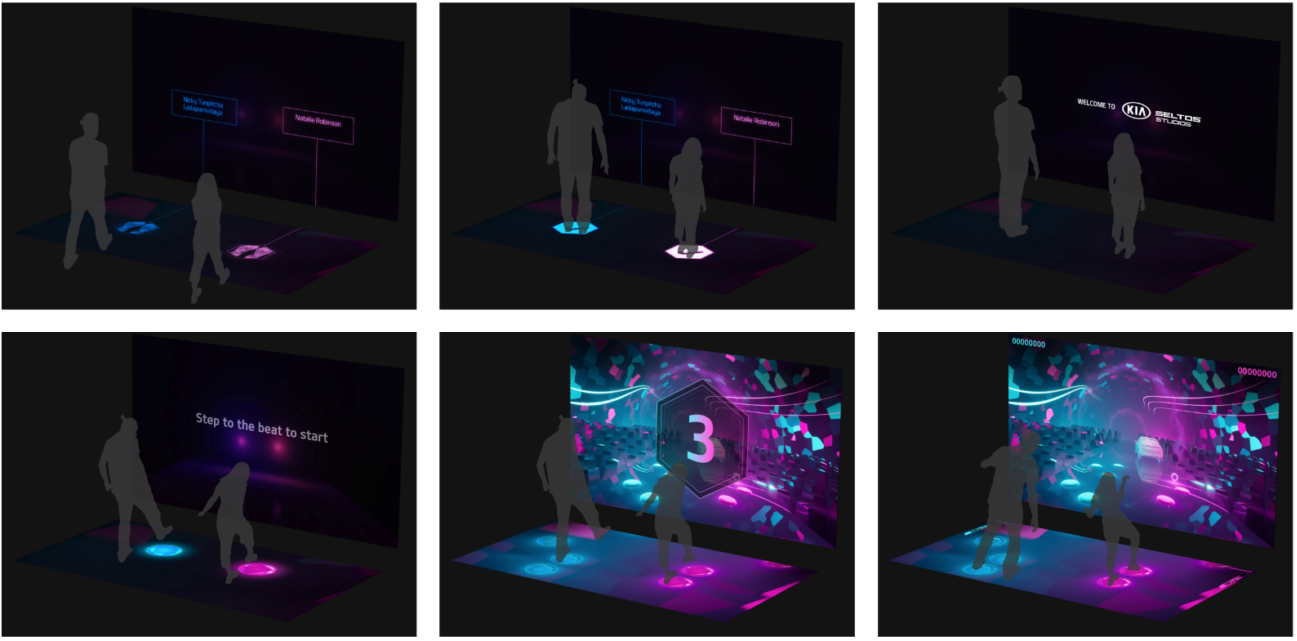
For us, the creative opportunity of Kia Beat the Beat lay in inviting audiences to step inside the Seltos universe and experience deconstructed elements of the car’s design in interesting and unusual ways. We took advantage of this opportunity by crafting a physically immersive experiential marketing game. Audiences would dance across an interactive floor to navigate a Kia Seltos through an evolving virtual world. The more beats they hit, the more dynamic their soundtrack and the more vibrant the visualisation before them.
Strong beat + sleek lines
InspirationWhen we were conceptualising Beat the Beat we took inspiration from a number of places. First was Kia’s newly released advertisement featuring Billie Eilish’s hit track ‘Bad Guy’. This, along with the Seltos’ advanced audio and lighting features, helped to define our strong focus on music. We were also inspired by the sleek lines and modern design of the Seltos itself, which we used as the visual basis for our experimentation with gamification as an experiential marketing mechanic.
Journey through an immersive world
Art Direction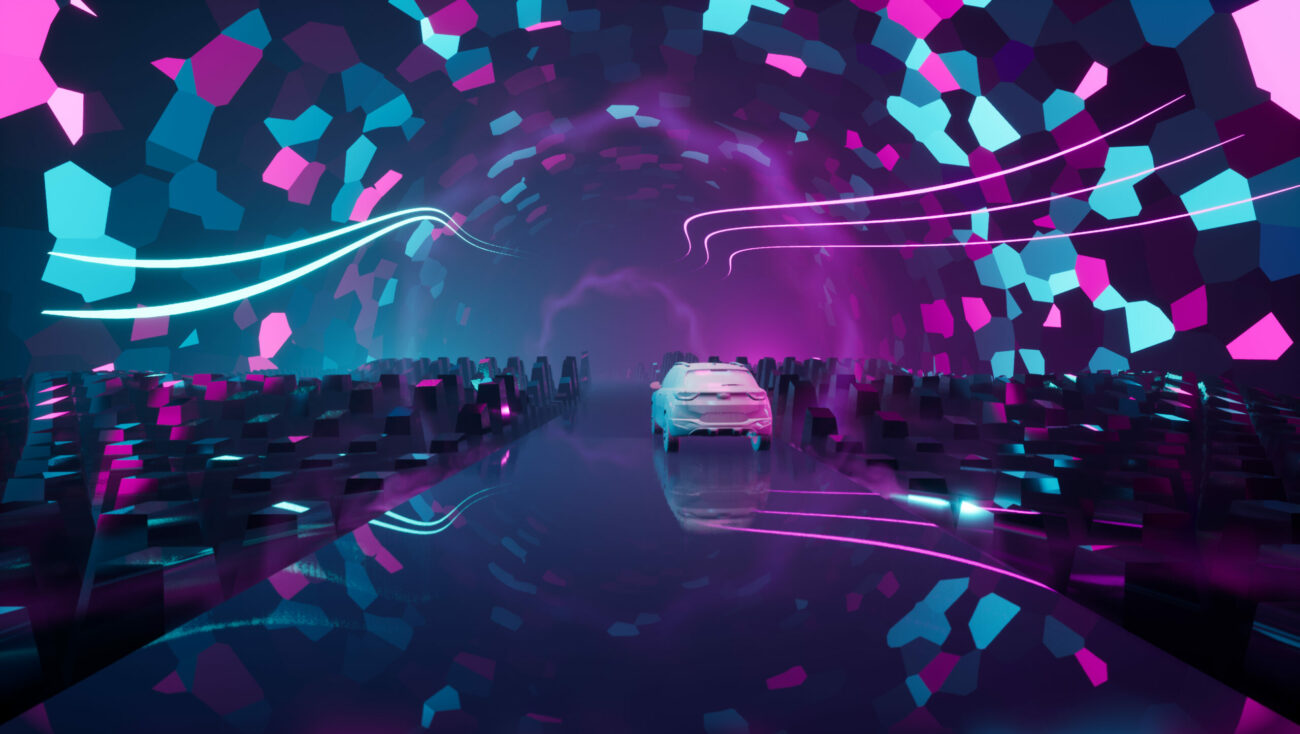
We didn’t want Beat the Beat to be any old automotive marketing stunt. We wanted it to be an experience for audiences to remember. As part of this, we felt it was important to not only take players on a stunning visual journey, but to ensure that that journey reacted directly to them. The solution was to develop a series of carefully curated real-time environments populated by procedural content.
Our art direction for this content drew from a range of sources, including the history of arcade games and the aesthetic of contemporary music videos. Within this modern, moody style, we designed the visuals and mechanics as an abstract deconstruction of the features that make the Seltos unique – from a split screen input echoing the dash display to immersive lighting effects and high quality audio.
A careful balancing act
Game DesignGiven the interactive nature of Kia Beat the Beat, player feedback was a key consideration for not only the art direction but the overall game design. While we found that adding more and more feedback made the experience more juicy and exciting, we still needed to find a way to balance the excitement that feedback provided and its ability to provide meaningful information to audiences.
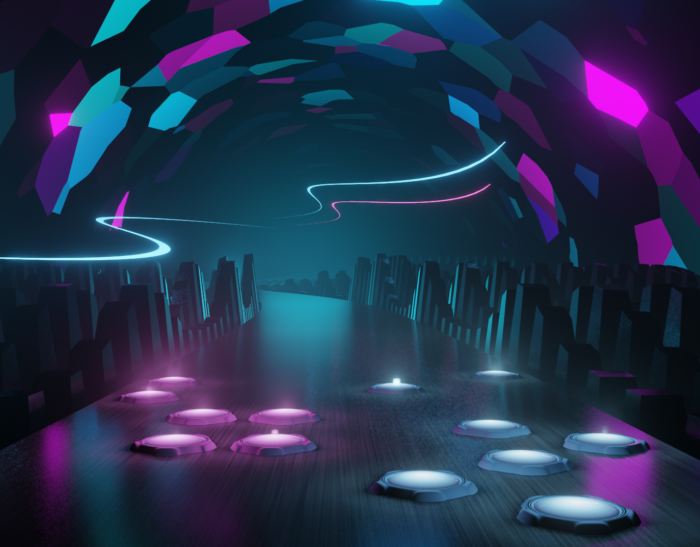
The question of competitive vs cooperative play was also a core element of our game design for this creative technology experience. While prizes would only be awarded to highest scoring individuals, we felt it was important to include the opportunity for players to approach the experience in their own way. This meant that siblings and friends could compete against one another, while parent and child pairings could play more cooperatively.
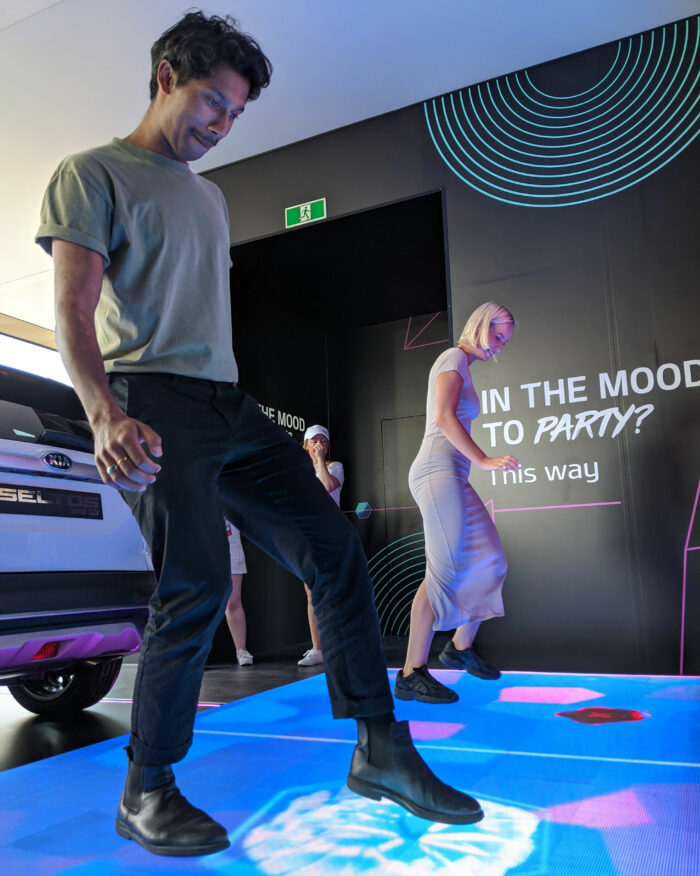
Nuanced interaction
Custom HardwareOne of the most exciting parts about this project was the hardware we were interfacing with, and the fact that it has not been extensively explored as an HCI – human control interface – for interactive experiences. Instead of touch triggers, we adapted a LiDAR scanner to track visitor movement and provide game input. This was then combined with a 5x3m LED wall, an equivalently sized LED floor, a dedicated game machine and registration tablets all integrated into a bespoke hardware solution.
Bespoke LiDAR tracking
LiDAR Tracking
Unlike games like Guitar Hero or Dance Dance Revolution, Kia Beat the Beat moved beyond static, one-dimensional triggers for interaction. Instead, players interacted through a creative technology tracking system capable of capturing both X and Y input. This tracking was made possible through a Hokuyo UST-10LX 2D LiDAR scanner for feet detection paired with roof-mounted infrared depth vision cameras.
The benefit of this approach over our usual Kinect-based solution was three-fold. First, we were able to improve the game’s responsiveness by quickly capturing and communicating data. Next, it helped us make the most of the limited space by allowing us to track multiple people within one play area. And finally, we were able to allow for more nuanced interactions, whereby a slide, stomp or gentle tap could produce different results.
Testing without hardware
TestingWorking with custom hardware is always an exciting challenge. On one hand, it allows us to develop interesting, intuitive ways to interact. On the other, there’s a significant amount of work and time that needs to go into design, acquisition and construction. One of the most nail-biting of these logistical challenges during production of Kia Beat the Beat was getting the custom-built LED floors in time – not just to install, but also to test.
Unavoidable delays meant that we essentially had to create the entire game without being able to play it. We had to try a lot of unusual methods to try and replicate what the experience would feel like – from projectors to mirrors to touchpads. At the end of the day, game testing involved a lot of finger tapping that eventually turned into foot tapping before shipping the hardware off to the event.
Procedural audio creates unique experience
Procedural AudioOver the years we’ve become increasingly interested in the idea of interactive, procedural audio. Given the focus on music in the Seltos design and advertisements, this seemed the perfect project to test some of our ideas around in this area. Indeed, the final creative technology experience was largely built around the idea of using a player’s movement and interaction to build a track unique to each engagement.
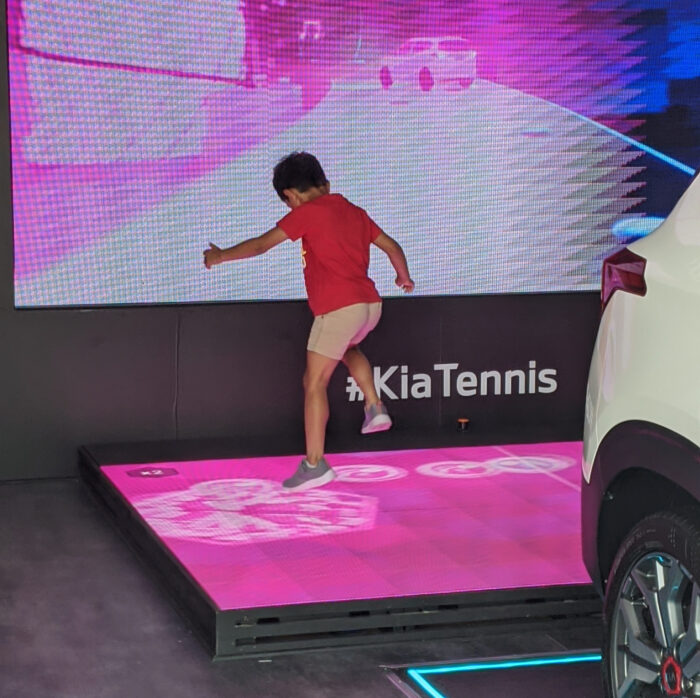
The core challenge of constructing the soundscape for the experiential marketing activation was the fact that the entire score needed to be procedurally generated. We spent a long time fine-tuning the audio tracks and interaction mechanics to find a balance between creative freedom for the player and the predetermined musicality needed to ensure each and every playthrough sounded good.
We also found another creative challenge in balancing the ‘premium’ EDM vibes of our inspiration tracks with the usually upbeat nature of game music. In this case, layering different audio tracks was the key to creating a distinctive mood while maintaining the energy of an exciting game. The result was a creative technology experience where player interaction influenced not only the visualisation before them, but also the music that surrounded them.
An explosion of light + colour
Immersive LightingWhile we don’t like to do the same thing twice, we do like to build on what we’ve learnt before. In this case, Beat the Beat presented the perfect opportunity to expand on our learnings from Kia Caraoke Studio. Nowhere was that more apparent than in our approach to lighting. While our lighting would be outside, rather than inside, the car this time, we knew its power to draw audiences and get them in the mood to dance.
To achieve that all-important wow factor, we spent a lot of time refining the user journey of the experiential marketing activation. From carefully considered colours within our in-game content to sparks of excitement through atmospheric lighting, we constructed an immersive environment that surprised and delighted audiences in equal measure.
Audience as participants
ParticipationAt an event as big as the Australian Open, you’re assured to have times when there’s a long line waiting for an experience. To keep the crowds entertained – and to draw people to the experience – we considered this waiting audience as participants in their own right. This meant that Kia Beat the Beat would need to be engaging not just for active players but also for the passive audience watching on.
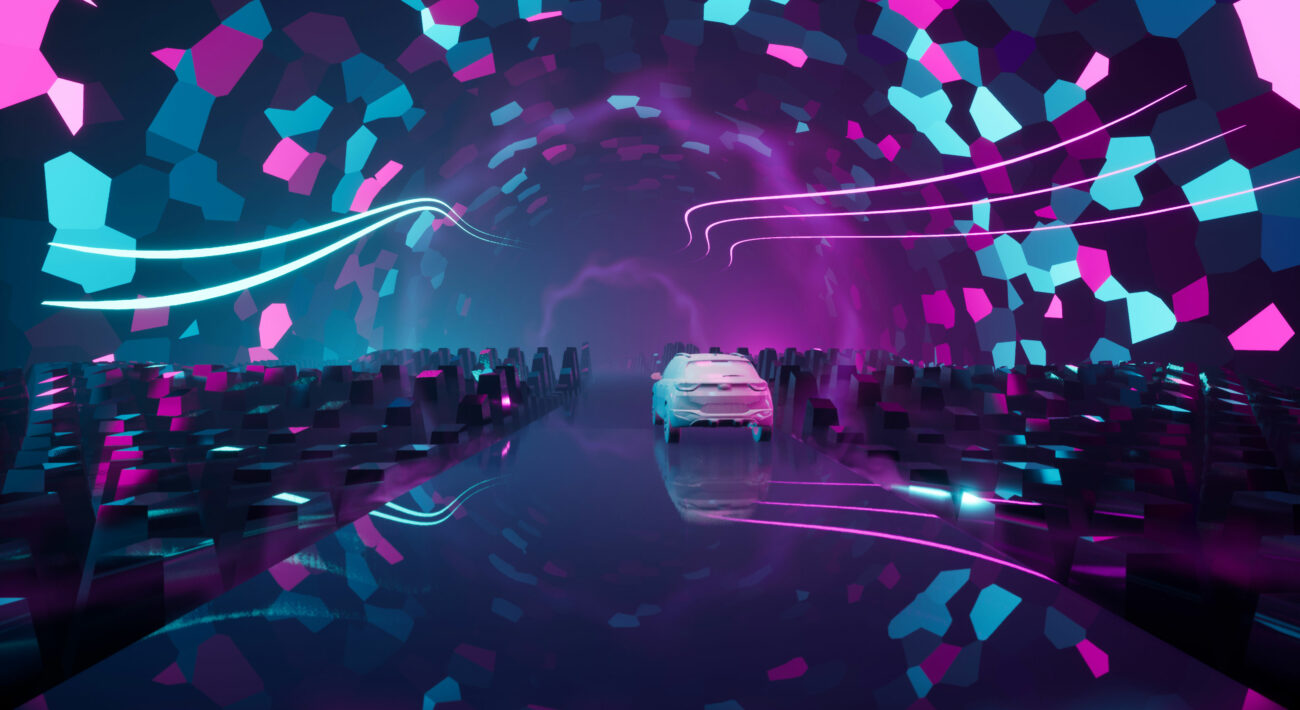
The split screen mechanic was our biggest friend in this endeavour. When thinking through the user experience during design, we quickly realised that players would likely only look at the floor when they were interacting with the game. Meanwhile, those waiting for their chance to participate would only see the wall.
While we designed the interactive dance floor as an energetic arcade game, we used the wall screen to show a stunning, constantly evolving visual world. The dynamic audio and immersive lighting effects then fed into both of these experiences, making each round of play unique and engaging for players and passers by alike.
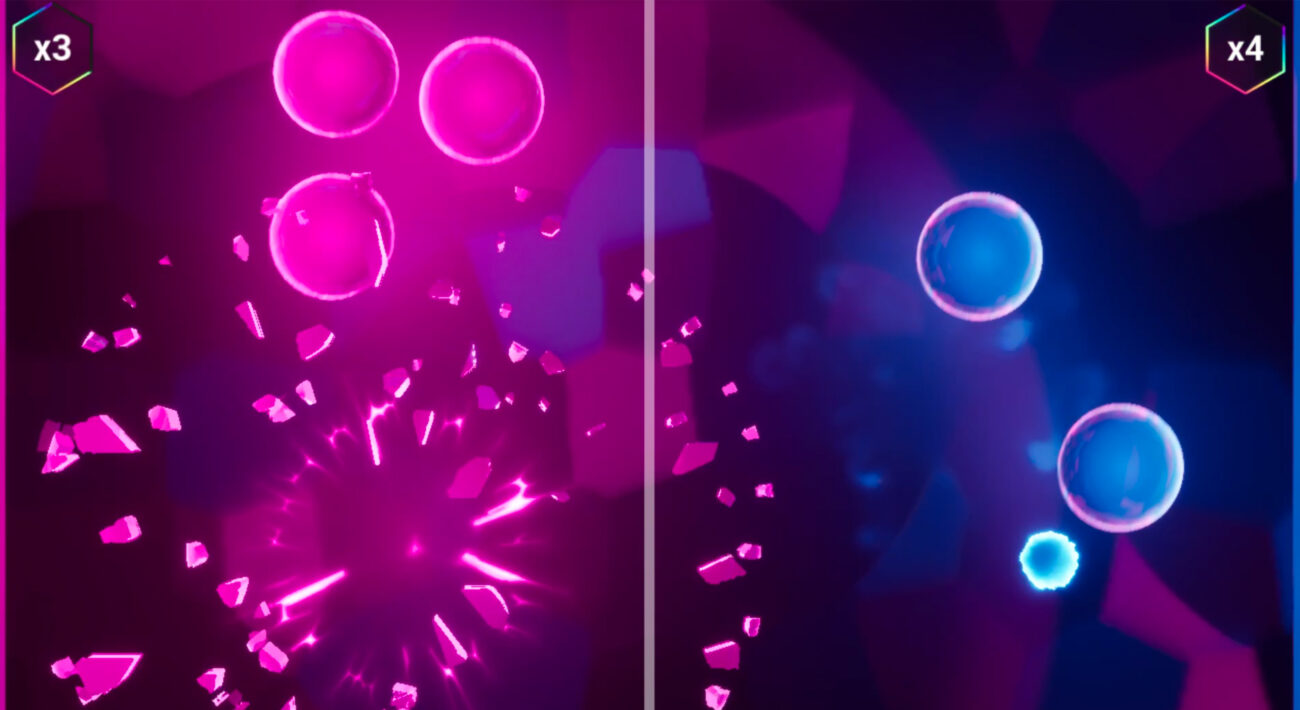
Deploying in rain, shine + smoke?
DeploymentAs with all projects, nothing can really prepare you for bump in. There are just too many variables. This time around we went from working in scorching 40°C heat to torrential rain to thick bushfire smoke. That said, there’s a special kind of camaraderie that comes with working in intense conditions with a diverse team. As always, bump in proved that the people you’re working with – and their ability to collaborate and problem solve under stress – are the most important part.
A seamless experience
EcosystemIn addition to the experience itself, on-site experiential marketing activations like Beat the Beat require an entire ecosystem to bring them to life. As well as providing on-site tech support, we developed a bespoke tablet application to manage the activation, a dedicated CMS, an EDM system and an analytics platform.
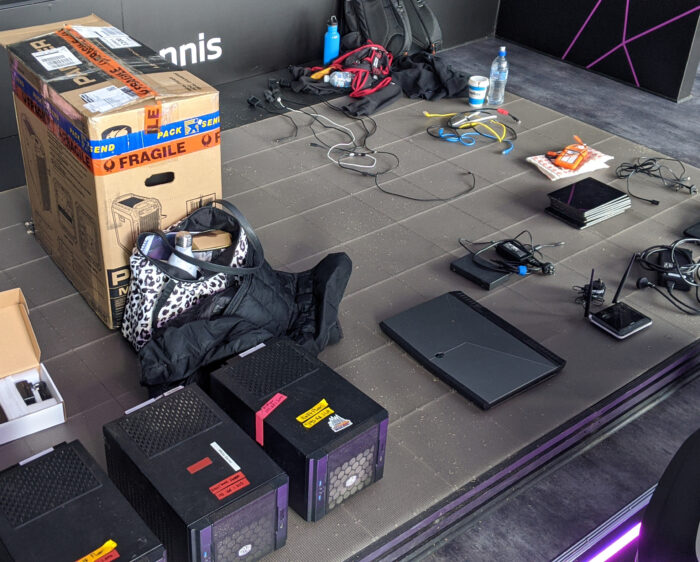
Perhaps most important, the tablet application gave brand ambassadors at the event the ability to easily and efficiently manage the creative technology activation. We kept the core functionality very simple to avoid both confusion and potential crashes. Ambassadors could add and remove players from the queue, assign players to teams, start and end sessions, and restart each element of the experience if anything went wrong.
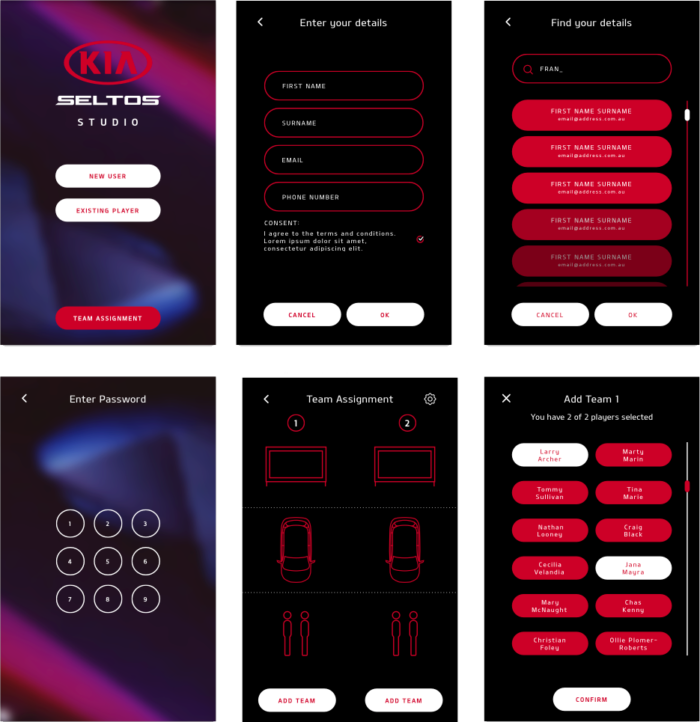
Personal, memorable experiences
Roll OutKia Beat the Beat debuted to near-constant crowds at the 2020 Australian Open – despite the often inclement weather. With an average play time of 5 minutes, the creative technology experience saw over 9,400 tennis fans engage with the Kia brand. Without ever stepping inside a car, the activation gave audiences a strong, personal experience of the brand that demonstrated the feel behind their new Seltos range.
For us, this project reinforced the power of immersive, interactive technology to provide experiences that surprise and delight. These experiences might be more abstract than traditional marketing, but they give audiences a memory that fosters a deeper connection with the brand – and endless possibilities thereafter.
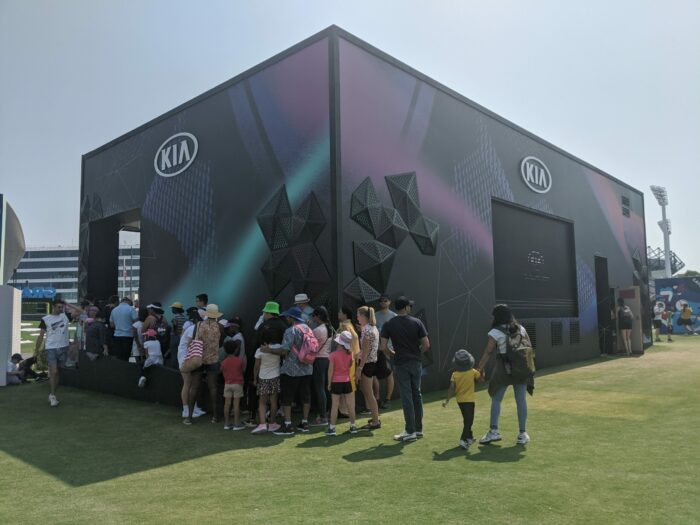

Stay in the loop
Subscribe to our newsletter to receive updates and insights about Kia Beat the Beat and other S1T2 projects.


























